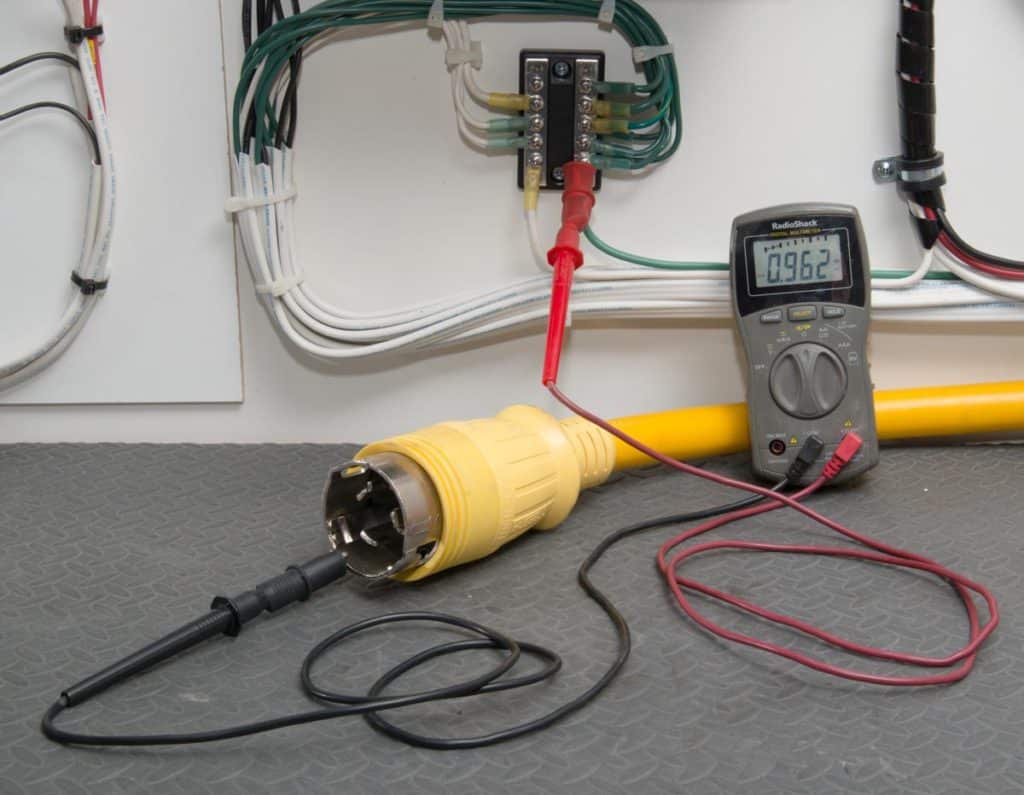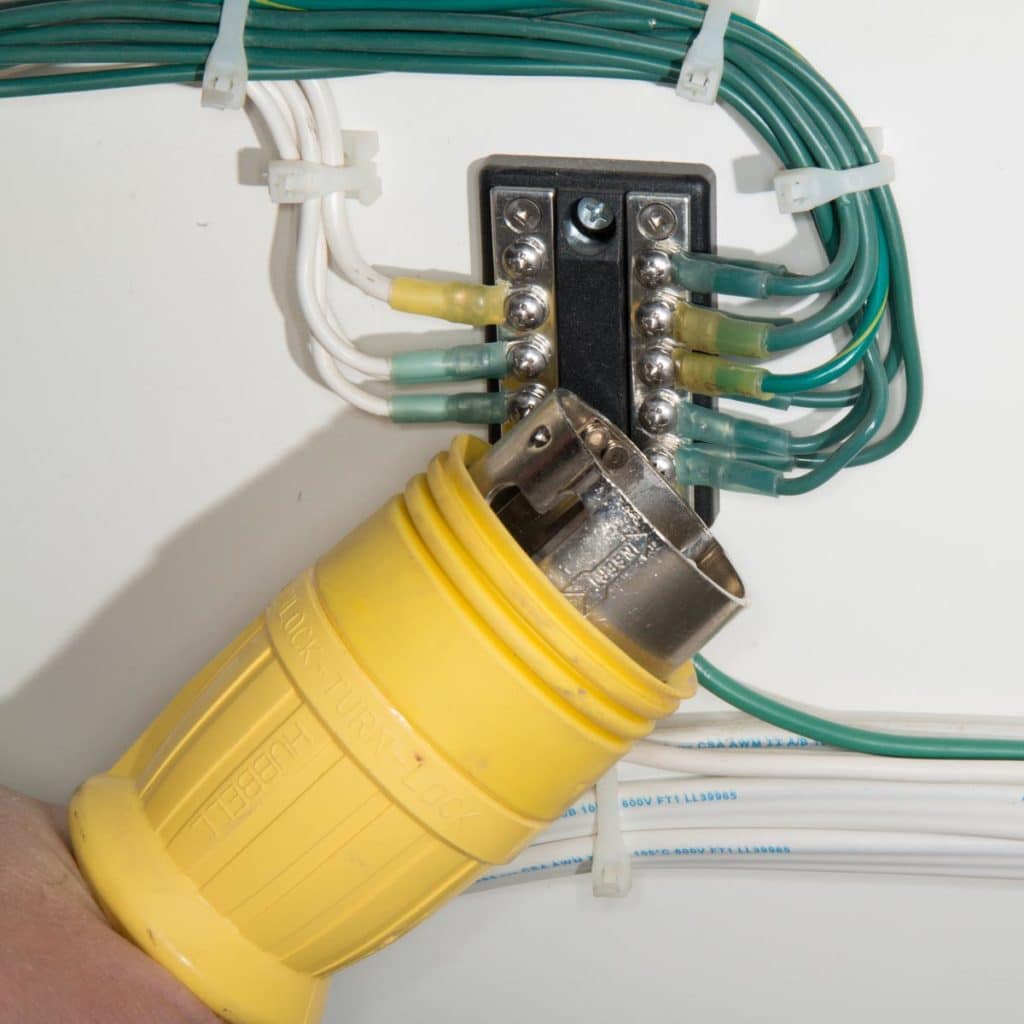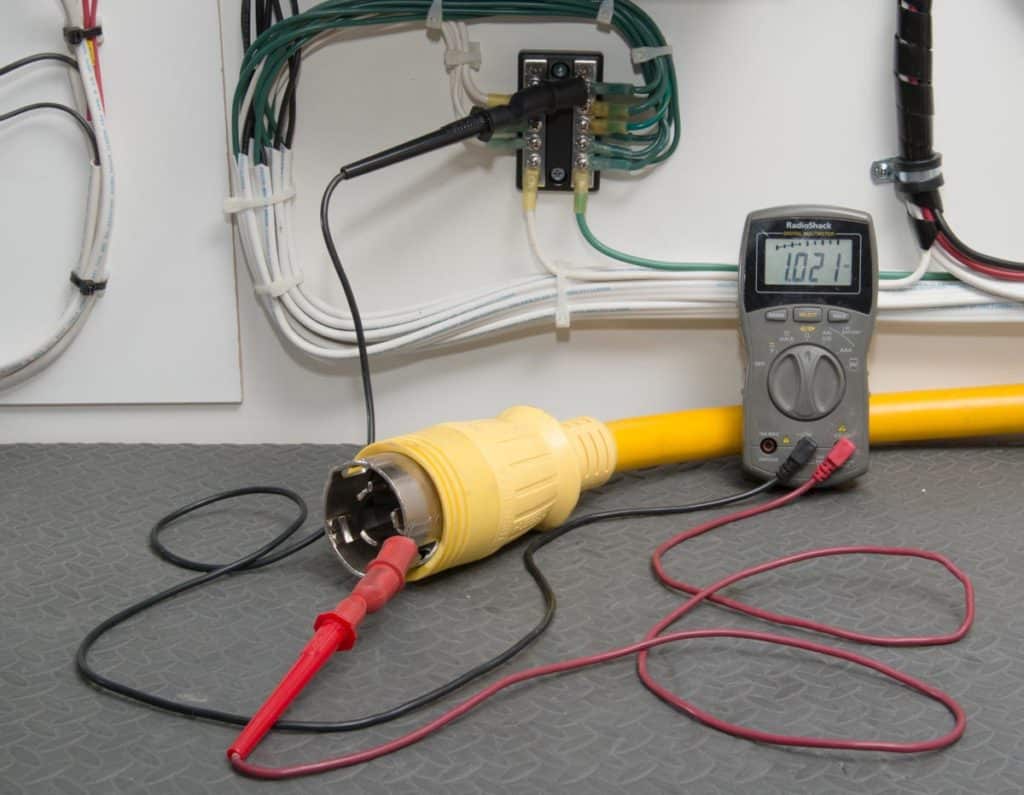A galvanic isolator allows significant current to pass through the shore power ground, but it blocks minor voltages common in marina ground wires to protect your boat’s metal from stray-current corrosion. “A lightning strike, not just on your boat but nearby in the marina, can pass massive current that causes that isolator’s diodes to fail,” says Wayne Kelsoe, the recently retired senior electrical engineer at Blue Sea Systems. Older isolators might fail “open” so they dangerously disconnect the boat’s ground from shore. Newer isolators — installed on new boats since 2011 — fail “closed” for safety, but that leaves the boat vulnerable to corrosion.

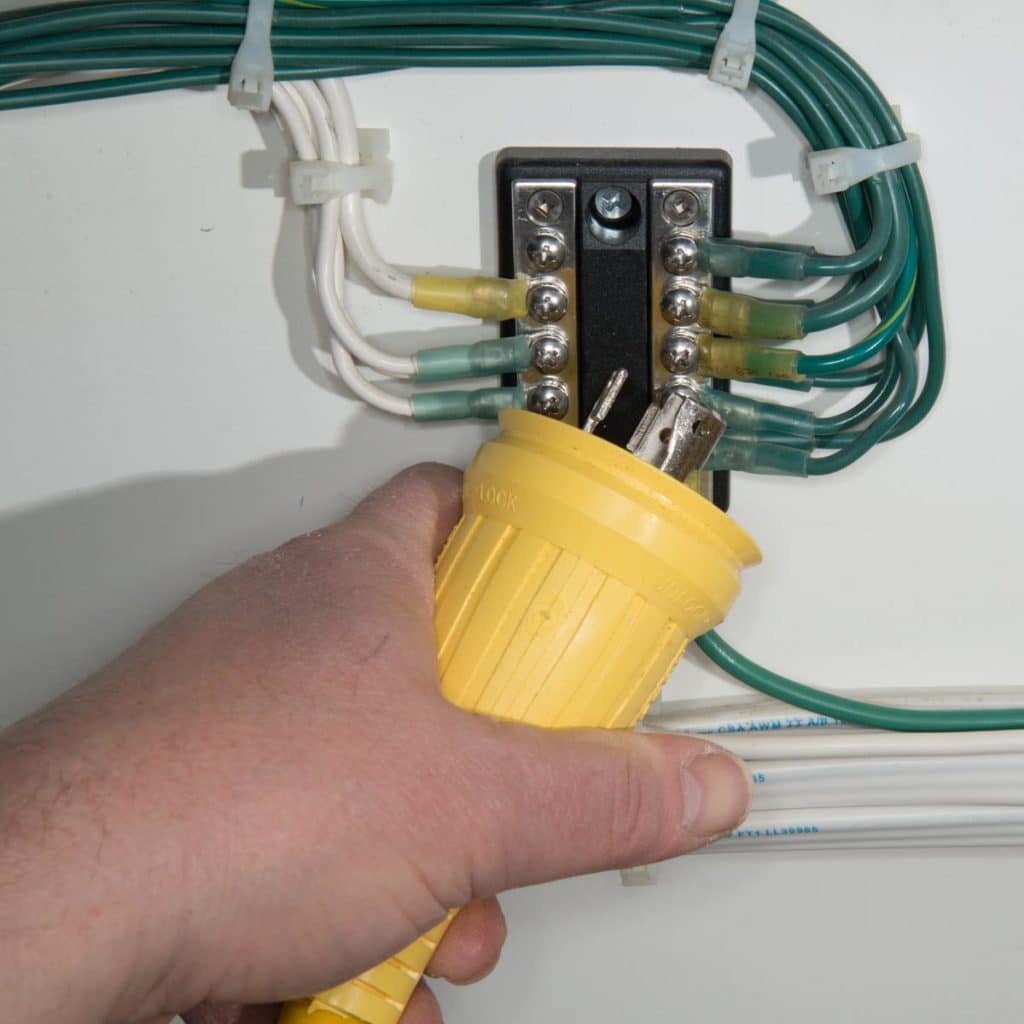
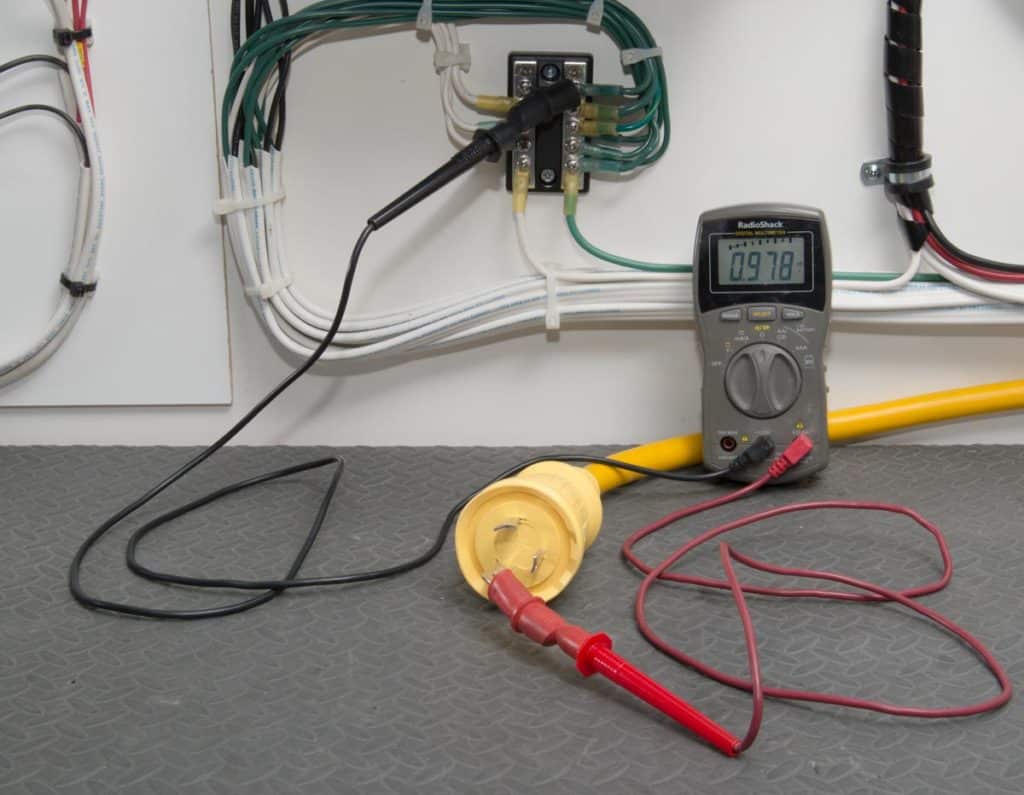
50-amp Cord Galvanic Isolator Diode Check
With dock and boat breakers turned off, bring the dockside end of the shore power cord close to the boat’s electrical panel. Set your multimeter to its diode check function.
